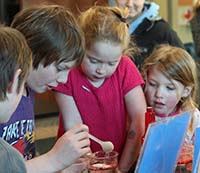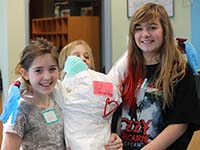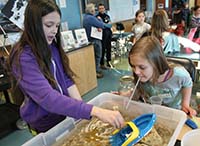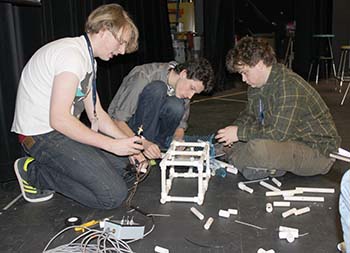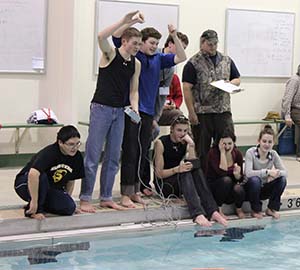From Alyeska Pipeline
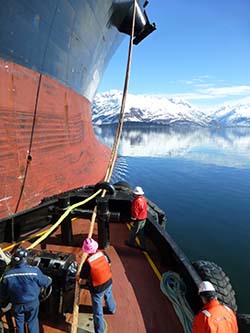
Crowley is a key partner in Alyeska’s Ship Escort/Response Vessel System. The company owns and operates the tugboats that escort tankers through Prince William Sound and docks them at the Valdez Marine Terminal. Crowley also maintains and staffs the other vessels in the system, like the oil spill response barges located around the Sound. There are over 100 Crowley employees on shift and ready to respond at any given time. These employees may be separated by several miles of land and ocean, but their commitment to safety is bridged from shore to sea.
That bridge is personified by the Safety Advocate Program, started in 2009. Safety Advocates are usually long-time vessel captains or crew who take on year-long assignments to facilitate and improve safe practices in the fleet. Longtime advocate and Crowley Master Richard Frost says he’s a liaison between deck and shore, observing jobs with a keen eye towards safety, and raising concerns from the fleet.
In a normal six-week shift, Frost is in the field about half the time, tagging along on tanker escorts, crew changes, mid-Sound tether drills and other jobs. Crowley has recently implemented a ship visit program, where deck officers from Crowley will visit a tanker and exchange perspectives. Frost credits these visits with a recent reduction in line handling incidents. Crews consistently sit down before each job – no matter how routine – and go over roles, risks and concerns. This ensures that everyone is on the same page before heading to work.
“I continue to be impressed by participation,” said Frost from his shore-side office. “Everyone is very conscious now.”
Feedback runs in both directions. In December, a tug crew brought up an issue: much of their personal protective equipment had water-sensitive lights that would activate if they ever fell overboard, but their work vests did not. Frost went to work researching available models and two weeks later sent two choices into the field for testing. The crew performed a thorough assessment, made a recommendation, and several weeks later Frost distributed lights to crews around the Sound.
“Having crews see their input taken is important,” noted Frost. “It makes them take the process seriously.”
• Submitted by Alyeska Communications.
